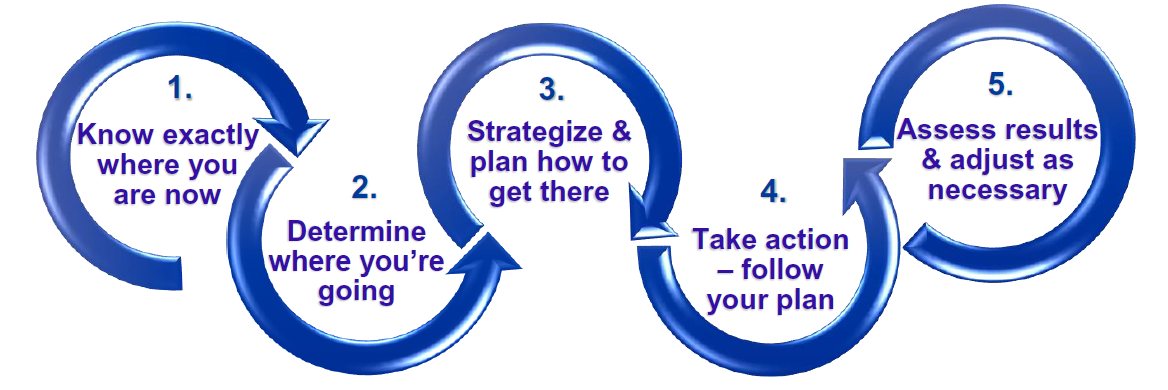Commit, Plan, Act
We achieve our goals much faster when we’re clear about where we’re going and set an intention and commitment to make it happen. However, most nonprofits, even with the very best of intentions, neglect to be strategic in their actions toward their goals and to purposely create an action plan to achieve their objectives.
If you are committed to make this year extraordinary, you must begin now if you haven’t already started. Ideally, you began this process last year – and kudos to you if you did! But… if you didn’t, there’s no time like the present to get started. Remember, the longer you wait to begin, the longer you put off achieving your goals. Here are the steps:
[/et_pb_text]
![]() Know Exactly Where You Are Now
Know Exactly Where You Are Now
Identify your starting point. Get crystal clear on where your organization is now. Who’s on your team? How do (or can) they best contribute moving forward? What are your past accomplishments? How well did you accomplish your goals last year? What were your challenges? How can you improve results this year?
![]() Determine Where You’re Going
Determine Where You’re Going
Together with your team, determine where you’re going. Identify your long- middle- and short-term goals and outcomes based on the identified needs of your clients, constituents and/or community.
![]() Strategize & Plan How to Get There
Strategize & Plan How to Get There
Create a strategy plan to get there, taking into consideration all of the information from steps 1 and 2. From your strategy plan, create an action plan to ensure consistent progress in the right direction.
![]() Take Action – Follow Your Plan
Take Action – Follow Your Plan
Work your plan to ensure steady progress and accountability. Know who’s doing what and by when. Assign tasks to the best person / people suited to take ownership and responsibility for that activity. Also, have a point person to help verify that everyone is on track.
![]() Assess Results & Adjust as Necessary
Assess Results & Adjust as Necessary
This is another important part of accountability. You may choose to evaluate results along the way or after completion of a project or goal depending upon the longevity or length of time it will take to achieve the intended outcomes. For larger projects, always conduct a “post-mortem” after you’ve completed the project. This is done to identify which elements of a project were successful, which were not, and how you can successfully improve upon outcomes now and in the future.
Ideally, these steps should be committed to an annual process for your leadership team. Every time you go through this 5-step process, while continually making improvements and adjustments along the way, the following year’s process becomes easier. Over time, the cycle creates a natural progression toward high impact achievement of your organization’s identified goals and outcomes.
And as a bonus, this dedication toward your organizational and programmatic goals is exactly what funders seek when looking to invest in a nonprofit’s success. This is an important part of improving your organization’s fundability!


